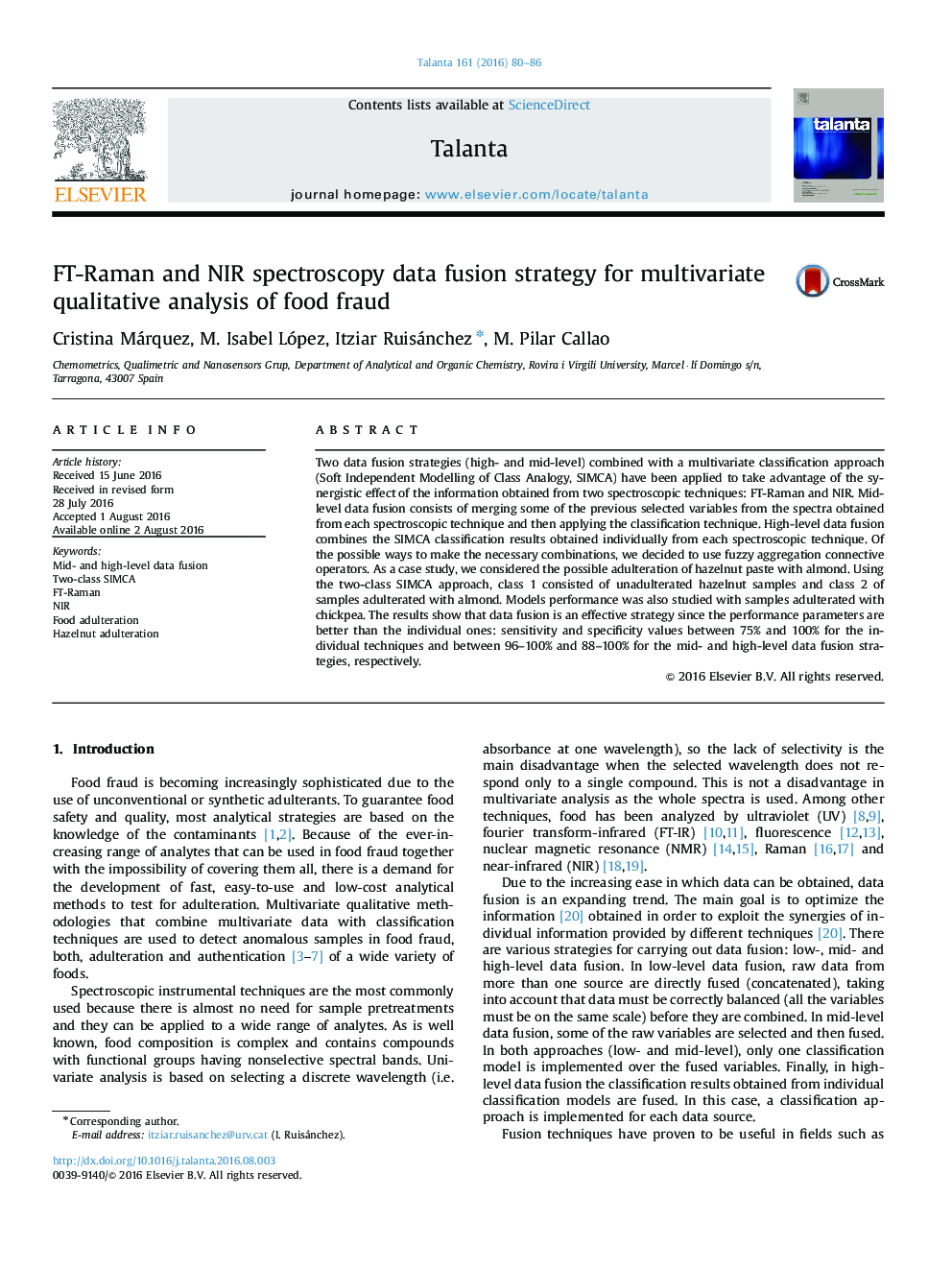| Article ID | Journal | Published Year | Pages | File Type |
|---|---|---|---|---|
| 1241691 | Talanta | 2016 | 7 Pages |
•A hazelnut adulteration problem with common and non-common adulterants was studied.•NIR and FT-Raman were used for individual and fused data.•The two-class (unadulterated and adulterated with almond) SIMCA approach was implemented.•High- and mid-level data fusion strategies were applied.•Data fusion was effective because the results were better than the individual ones.
Two data fusion strategies (high- and mid-level) combined with a multivariate classification approach (Soft Independent Modelling of Class Analogy, SIMCA) have been applied to take advantage of the synergistic effect of the information obtained from two spectroscopic techniques: FT-Raman and NIR. Mid-level data fusion consists of merging some of the previous selected variables from the spectra obtained from each spectroscopic technique and then applying the classification technique. High-level data fusion combines the SIMCA classification results obtained individually from each spectroscopic technique. Of the possible ways to make the necessary combinations, we decided to use fuzzy aggregation connective operators. As a case study, we considered the possible adulteration of hazelnut paste with almond. Using the two-class SIMCA approach, class 1 consisted of unadulterated hazelnut samples and class 2 of samples adulterated with almond. Models performance was also studied with samples adulterated with chickpea. The results show that data fusion is an effective strategy since the performance parameters are better than the individual ones: sensitivity and specificity values between 75% and 100% for the individual techniques and between 96–100% and 88–100% for the mid- and high-level data fusion strategies, respectively.
Graphical abstractFigure optionsDownload full-size imageDownload as PowerPoint slide
